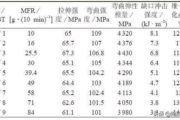
Polyetherimide (PEI) is an amorphous thermoplastic with high-temperature resistance, strength, and stiffness.
Typical Applications of Polyetherimide (PEI)
Automotive
– engine components
– temperature sensors
– fuel and air handling devices
Electrical/electronics
– connector materials
– printed circuit boards
– circuit chip carriers
– explosion-proof boxes
Packaging applications
Interior aircraft materials
Medical
– surgical staplers
– tool housings
– non-implant devices
Plastic PEI Injection Molding Processing Conditions
| Conditions Name | Value |
|---|---|
| Drying | PEI absorbs moisture and can cause material degradation. Moisture content should be less than 0.02%. Suggested drying conditions are 150°C [302°F] for 4 hours in a desiccant dryer (6 hours for reinforced and blended grades). |
| Melt Temperature | 340°C–415°C [644°F–780°F] reinforced grades 340°C–440°C [644°F–824°F] unreinforced grades |
| Mold Temperature | 70°C–175°C [158°F–347°F] typically 140°C |
| Material Injection Pressure | 70MPa–150 MPa |
| Injection Speed | As high as possible |
Chemical and Physical Properties of Polyetherimide (PEI)
The chemical structure of PEI consists of repeating aromatic imide and ether units, which accounts for its high temperature resistance. This structure also leads to high stiffness and modifiers are used to make the material processible. PEIs are very stiff and strong even without reinforcements, and they have excellent thermal stability so they can be used in high temperature applications. They also have good flame and chemical resistance, and effective electrical insulation properties. The glass transition temperature is high (215°C [419°F]). PEI exhibits low shrinkage and highly isotropic mechanical properties.









